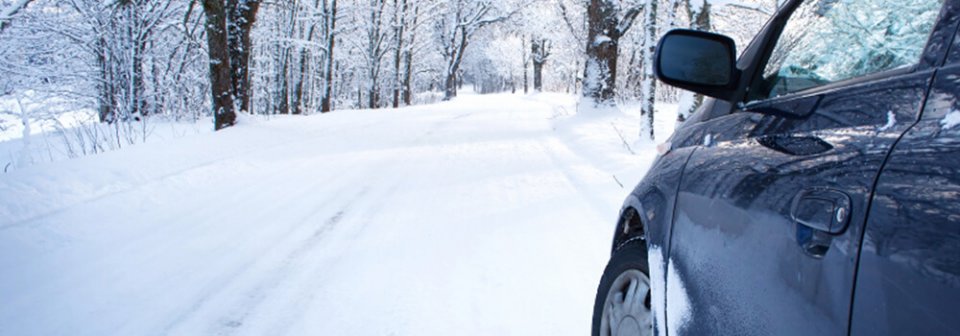
Winter driving can present a whole array of hazardous conditions that you won’t encounter during any of the other seasons. To begin with, braking distance is greatly affected by rain, ice, and snow. And, knowing how to maneuver safely when the weather takes control of your daily commute or road trip can possibly make the difference between getting into a crash and avoiding one.
Whenever the temperature is about to drop, you should make sure to winterize your car. Spending a little extra time checking your vehicle’s tires and tire pressure, battery, belts and hoses, radiator, oil level, lights, brakes, exhaust system, heater/defroster, wipers and ignition system can save you money and keep you from breaking down as well.
Three key elements should always be followed when driving on slick roads:
• Stay alert;
• Slow down; and
• Stay in control
Remember – you won’t have the same level of control on rain, ice, or snow-covered winter roads as you do during the summer months because of a reduction in traction. That means you can’t drive as fast, take turns at high speed, or expect your stopping distance to remain the same. Therefore, you should:
• Lower your speed
• Stop and turn more gently
• Increase following distance
Some safety experts recommend motorists use extra caution on slippery roads by reducing their speed to at least half the posted speed limit. Of course, conditions will dictate how fast you can drive safely. You may have to drive even slower under snowy road conditions.
If your tires are excessively worn, you will increase your chances of having an accident. Check the tread and replace the rubber, if you need to. Maintaining proper tire pressure is also an important part of safe winter driving.
When the outside temperature drops ten degrees, your tires’ air pressure can drop one to two pounds per square inch (commonly referred to as PSI), and the lower the pressure goes the more difficult your vehicle will be to handle. Keep your tires properly inflated by checking the pressure often during the cold winter months.
Here are a few more ways to stay safe on winter roads:
• Start slowly to avoid spinning your tires. Accelerate evenly.
• Install chains as needed where snow and ice are present. Keep your distance.
• Reduce your speed. Gauge how fast you can safely drive and stay within the limits of your driving ability.
• Avoid hard braking. Slow down earlier so braking won’t need to be sudden.
• Maintain a safe distance between your vehicle and the one ahead of you.
• Keep your vehicle in good working condition. Pay attention to the lights, tires, brakes, wipers, defroster, and radiator for proper coolant level.
• Don’t drive with fogged or frosted windows. Keep all your windows clear.
• Ice is often not visible until it’s too late. Be exceptionally aware on bridges and in shaded areas for “black ice”.
You may not be able to avoid every accident while driving on slippery winter roads, but by heeding some of these valuable tips, you can greatly reduce your chances.
Reduce what you’re paying for car insurance and start getting the best auto insurance rates available. It’s easy. Just get a free auto insurance quote comparison today!



